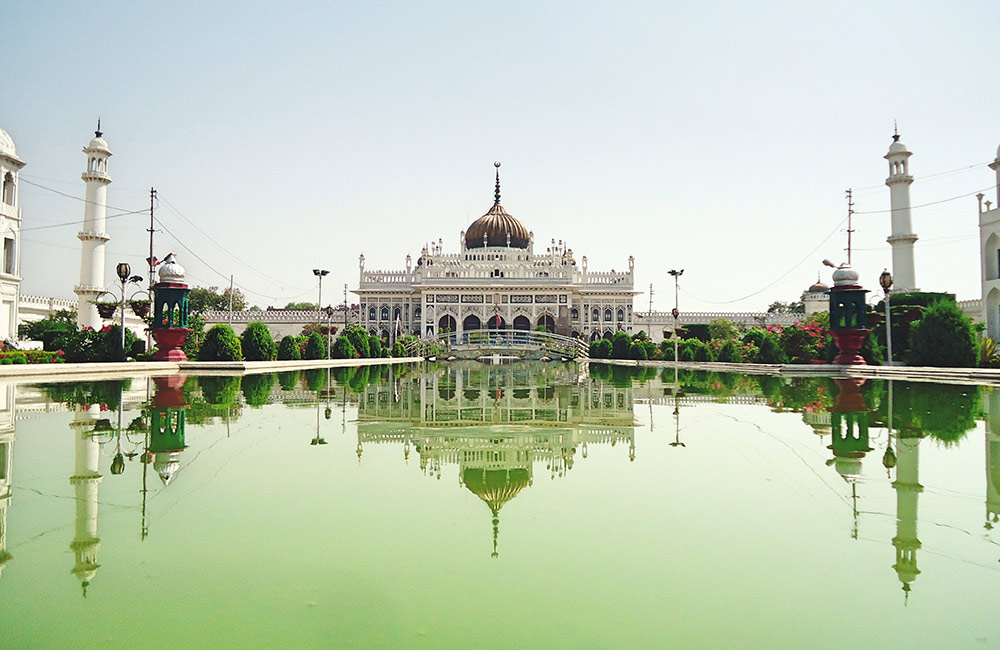
Introducing Lucknow, the capital of Uttar Pradesh, india. Lucknow is notorious for its literal significance as well as sightseer magnet spot. Lucknow is notorious for its literal monuments,i.e, Bara Imambara, British occupancy, Rumi darwaza etc.
Lucknow is also known as the heart of the chikankari community. Let’s get the details about the many notorious sightseers and literal spots of lucknow.
-Bara Imambara
What we call Bara Imambara is a large synagogue complex whose main portion is an enormous hall, piecemeal from the Asfi synagogue and Baoli. It houses the graves of Nawab Asaf-ud-Daula and his wife Shamsunnisa Begum. Then, Muslims perform their sacred rituals during the Muharram jubilee, also known as Azadari in the original language. On this day,
Muslims mourn the death of Husayn ibn Ali in the battle of Karbala. The Bara Imambara is erected in the combination of Mughal, Rajput and Gothic architectural styles. Designed by Hafiz Kifayat Ullah, an extremely famed mastermind of that time, it’s an illustration of sheer engineering phenomenon and has no parallel.
-British occupancy
The biggest and the most emblematic event that The Residency is known for was the First War of Independence in 1857. The detector for this began with the Indian Sepoys employed by the British. The British Residency, which stands as substantiation to the Rebellion of 1857 must feature in the list of the most important Places to visit in Lucknow. The Residency Complex consists of several individual structures and isn’t only rich in history, but it’s also an everlasting illustration of British architectural chops.
-Rumi darwaza
The Rumi Darwaza (Gate) is an inconceivable structure which stands imposingly between Bara Imambara and Chota Imambara in Lucknow, Uttar Pradesh. Constructed in 1784 under the rule of Nawab Asaf-ud-Daula, it’s a fine illustration of Awadhi armature, or the Lucknow School of Architecture. It was a style espoused by the Nawabs of Awadh to save the Mughal architectural style while experimenting with newer styles andmaterials.The Rumi Darwaza, one of the heritage lodestones in Uttar Pradesh, is also pertain to as Turkish Gate because it bears a strong similarity in design to a gateway erected in ancient Constantinople ( moment’s Turkey) called Bab-i-Humayun.
-Chota Imambara
This assessing monument lies to the west of Bara Imambara and is a true sight to behold. The Chhota Imambara was originally a congregation hall for Shia Muslims that was erected by Muhammad Ali Shah, who was the third Nawab of Awadh, in 1838. The Imambara was to serve as his own tomb as well as that of his mama, who’s buried beside him in this prestigious monument.The surface is complete with Quranic verses which are written in Islamic penmanship on the walls of the monument. Still, it isn’t just the surface of the Imambara which catches the fancy of the eager callers. Indeed the innards of the monument are designed and maintained with intricate details and utmost care.
-Chattar manzil
The meaning of the term Chhatari is Umbrella which comes from its guilt plate with a covering marquee. Located on the banks of Gomti River, the foundation of this remarkable sightseer place in Lucknow was laid by Nawab Ghazi-ud- noise Haider. Still, the construction of Chhatar Manzil got complete in the reign of his son-Nasir-ud- noise Haider. The armature of this literal structure presents a beautiful emulsion of both Indian and European architectural style.portion of it was also destroyed by Britishers during the war of 1857.


